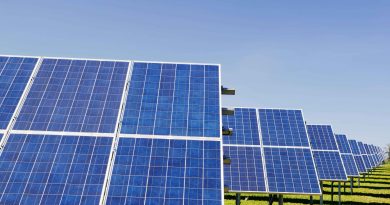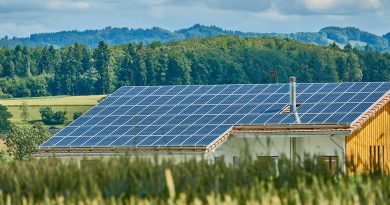Grid-Tied Solar Electric System: Understanding the Basics
Solar energy is a rapidly growing industry that has gained immense popularity in recent years. As individuals and communities become more aware of the environmental implications of traditional energy sources, the shift towards cleaner and more sustainable alternatives, such as solar power, has become imperative. One type of solar energy system that has emerged as a viable solution for many households and businesses is a grid-tied solar electric system. In this blog, we will explore what a grid-tied solar electric system is, how it works, and the benefits it offers.
Understanding Grid-Tied Solar Electric Systems
A grid-tied solar electric system, also known as a grid-connected system, is a solar power setup that is designed to work in tandem with the local utility grid. Unlike off-grid or standalone systems that operate independently, a grid-tied system remains connected to the grid, allowing the exchange of electricity between the solar panels and the utility company.
The primary components of a grid-tied solar electric system include solar panels (also known as photovoltaic or PV panels), an inverter, and a net meter. Solar panels convert sunlight into electricity, while the inverter transforms the direct current (DC) output from the panels into alternating current (AC) that can be used to power your home or business. The net meter, a key component of grid-tied systems, keeps track of the electricity imported from or exported to the utility grid.
How the System Works
A grid-tied solar electric system works by harnessing sunlight through the solar panels and converting it into usable electricity. During the day, when the sun is shining, the panels generate electricity that is first consumed by the electrical appliances and devices within the premises. If the solar production exceeds the energy demand, the excess electricity flows back into the grid through the net meter, which credits the account for future use.
Conversely, when the solar panels do not produce enough electricity to meet the demand, such as during nighttime or cloudy days, the grid supplies the required power. This seamless transition between solar power and grid power ensures a continuous and reliable energy supply.
The Benefits of a Grid-Tied Solar Electric System
There are several advantages to installing a grid-tied solar electric system:
1. Cost savings: By generating your own solar power, you can significantly reduce or even eliminate your electricity bills. Excess energy generated can be credited, resulting in potential savings on future utility bills.
2. Environmental impact: Solar energy is clean and renewable, helping to reduce greenhouse gas emissions and dependence on fossil fuels. Using solar power contributes to a greener and more sustainable future.
3. Net metering: The net metering system allows grid-tied system owners to earn credits for the excess electricity they produce. These credits can be used to offset future consumption, ensuring optimal utilization of generated electricity.
4. Low maintenance: Grid-tied solar electric systems require minimal maintenance, as there are no batteries to monitor or replace. Regular cleaning of the solar panels to remove dust or debris is generally the extent of maintenance required.
5. Return on investment: An investment in a grid-tied solar electric system offers a high return on investment over time. The savings realized from lower electricity bills, along with potential incentives and tax credits, make it an economically viable choice for both residential and commercial applications.
Conclusion
In conclusion, opting for a grid-tied solar electric system with SolarClue® is a smart and sustainable choice for those who want to harness the benefits of solar energy without sacrificing reliability. Our interconnected system seamlessly combines the use of solar power with the grid’s support when needed, providing the best of both worlds. With its potential for cost savings, positive environmental impact, and ease of maintenance, a grid-tied system from SolarClue® represents a crucial step towards a greener and more energy-independent future. If you’re contemplating a solar power system, join the clean energy revolution by choosing a grid-tied solution with SolarClue®.
Frequently Asked Questions
A grid-tied solar electric system is a solar power setup that is connected to the local electric grid. It generates electricity from sunlight using solar panels and feeds any excess energy back into the grid.
The solar panels convert sunlight into DC electricity. An inverter then converts this DC power into AC electricity, which is compatible with the grid. The electricity generated can be used by the home or business, with any surplus sent to the grid.
During periods of low sunlight, the system draws electricity from the grid. Grid-tied systems are designed to seamlessly switch between solar-generated power and grid power as needed.
In most cases, no. Grid-tied systems are designed to shut down during a blackout to ensure the safety of utility workers. However, some systems with battery backup capability can provide limited power during outages.
Yes, many regions offer financial incentives such as tax credits, rebates, and net metering programs to encourage the adoption of solar energy systems.
Net metering allows system owners to receive credit for excess electricity they feed back into the grid. This credit can offset their electricity bills when their solar panels generate less electricity than their household or business needs.
On average, grid-tied solar systems have a lifespan of 25 to 30 years. The solar panels often come with warranties ranging from 20 to 25 years.
While it’s possible to install a small system for personal use, it is recommended to hire a professional for larger installations to ensure compliance with local regulations and safety standards.
Grid-tied systems generally have low maintenance requirements. Regular inspections and cleaning of solar panels may be necessary, and components like inverters may need occasional checks.
Yes, in many areas with net metering programs, surplus electricity generated by your solar system can be sold back to the grid, earning you credits or direct compensation from the utility company.




